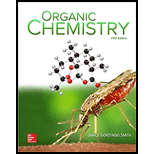
(a)
Interpretation: The identification of polar molecules is to be done and the direction of the net dipole is to be shown if one exists.
Concept introduction: The polarity of a molecule depends upon the electronegativity difference between the atoms. The electronegativity difference predicts the directions of bond dipoles. A polar molecule possesses net dipole, whereas a non-polar molecule does not possess net dipole moment.
(b)
Interpretation: The identification of polar molecules is to be done and the direction of the net dipole is to be shown if one exists.
Concept introduction: The polarity of a molecule depends upon the electronegativity difference between the atoms. The electronegativity difference predicts the directions of bond dipoles. A polar molecule possesses net dipole, whereas a non-polar molecule does not possess net dipole moment.
(c)
Interpretation: The identification of polar molecules is to be done and the direction of the net dipole is to be shown if one exists.
Concept introduction: The polarity of a molecule depends upon the electronegativity difference between the atoms. The electronegativity difference predicts the directions of bond dipoles. A polar molecule possesses net dipole, whereas a non-polar molecule does not possess net dipole moment.
(d)
Interpretation: The identification of polar molecules is to be done and the direction of the net dipole is to be shown if one exists.
Concept introduction: The polarity of a molecule depends upon the electronegativity difference between the atoms. The electronegativity difference predicts the directions of bond dipoles. A polar molecule possesses net dipole, whereas a non-polar molecule does not possess net dipole moment.
(e)
Interpretation: The identification of polar molecules is to be done and the direction of the net dipole is to be shown if one exists.
Concept introduction: The polarity of a molecule depends upon the electronegativity difference between the atoms. The electronegativity difference predicts the directions of bond dipoles. A polar molecule possesses net dipole, whereas a non-polar molecule does not possess net dipole moment.
Want to see the full answer?
Check out a sample textbook solution
Chapter 1 Solutions
PKG ORGANIC CHEMISTRY
- Indicate how from 1,2-diaminobenzene to obtain 1-metilbenzotriazol.arrow_forward-C = C - C - + Br₂ + I" -> -C-C-c -C = C -C- + Br² + I₂ -C=C Br I + Brū + Iz -7- C - C-C- I Br Mechanism; - C = c - c - + Br - Br > - C-c-c- Br -C-C-C- + 1 - - -Ċ-Ċ'-c' - Br Br Iarrow_forwardWrite the mechanism of the esterification reaction (please show the mechanism included line pairs and arrows)arrow_forward
- How do I break down the reaction shown on the chalkboard and explain it correctly using the bromonium ion mechanism, instead of the (disproven) carbocation-based mechanismarrow_forward¿Qué the product is obtained from tetraethoxypropano and hidrazina?. Indicate the reason why the corresponding dial is used.arrow_forwardIf CH3COCH2CH(OCH3)2 is reacted with hydrazine, two isomeric products are formed. Indicate their structures and the major product.arrow_forward
- Is it possible to obtain addition derivatives to nitrogen in position 2 of pyrazoles by reaction with electrophilic agents? Reason for this.arrow_forwardStarting from 1,3-dicarbonyl derivatives to obtain isooxazoles and isothiazoles. Indicate whether synthetic methods exist.arrow_forwardIn the synthesis of benzotriazole, adding NaNO2 heats the solution. State the reason.arrow_forward
 Chemistry & Chemical ReactivityChemistryISBN:9781133949640Author:John C. Kotz, Paul M. Treichel, John Townsend, David TreichelPublisher:Cengage Learning
Chemistry & Chemical ReactivityChemistryISBN:9781133949640Author:John C. Kotz, Paul M. Treichel, John Townsend, David TreichelPublisher:Cengage Learning Chemistry & Chemical ReactivityChemistryISBN:9781337399074Author:John C. Kotz, Paul M. Treichel, John Townsend, David TreichelPublisher:Cengage Learning
Chemistry & Chemical ReactivityChemistryISBN:9781337399074Author:John C. Kotz, Paul M. Treichel, John Townsend, David TreichelPublisher:Cengage Learning

